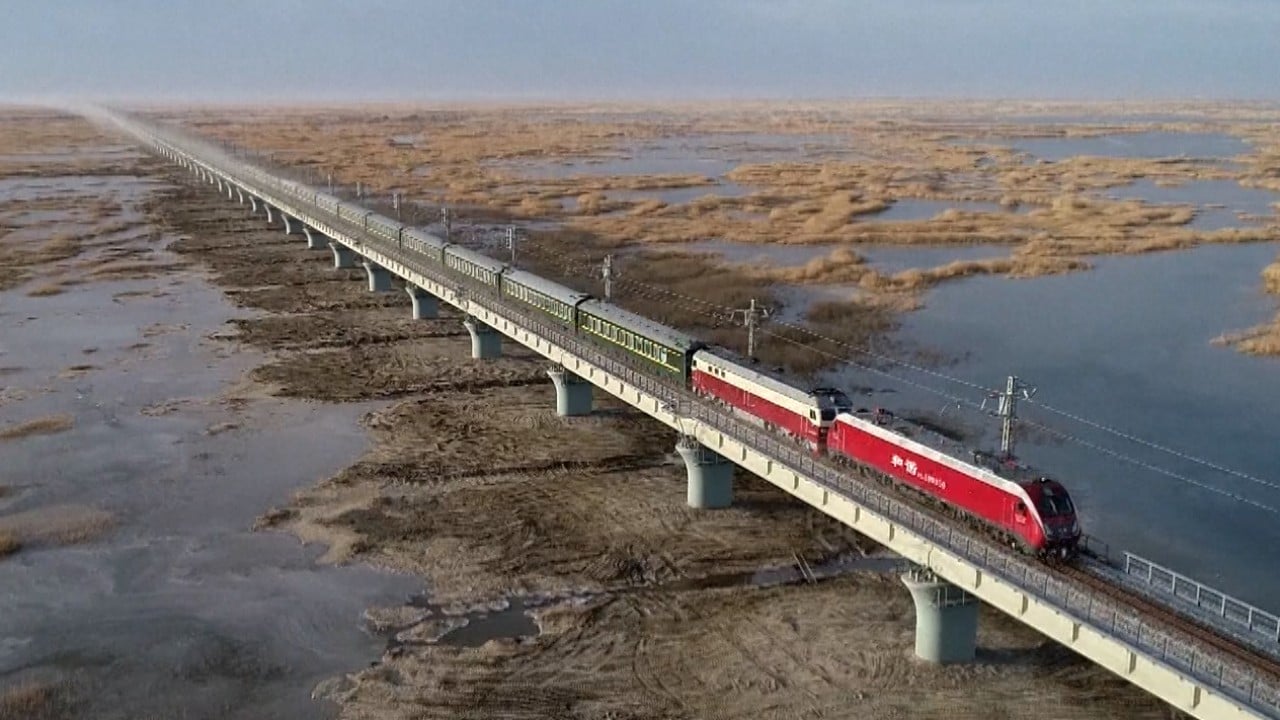
China must consider environmental effect and economic fragility for belt and road projects, study says
- China’s ambitious effort to address global inequality and boost trade has an unequal problem of its own
- Study finds some countries are in desperate need of economic development but their environment could collapse in rapid growth
A total of 18 countries, including Thailand, Vietnam and Sri Lanka, were highlighted as “key development zones” and “the pace of their economic agglomeration should be accelerated”, said Fang and colleagues in a paper published in the journal Science Bulletin this month.
In areas where the environment could not support a booming economy, “developed countries should shoulder more responsibilities”, the authors added.
The Belt and Road Initiative was proposed by the Chinese government in 2013 as a type of Marshall Plan to reduce poverty and boost trade across the globe. In the beginning, it was not taken seriously because most member countries were poor. But soon the initiative grew and became the largest infrastructure construction and investment programme in history.
It consists of an overland “belt” across the Eurasian supercontinent and a maritime “road”. It has the participation of more than 60 countries that are home to two-thirds of the world’s population, and investments in trillions of US dollars.
What is China’s Belt and Road Initiative all about?
But to China, a bigger concern should be the environmental issue, according to Fang.
Infrastructure projects such as power plants, railways and factories would leave a large footprint on the local environment. Water shortages, urban expansion, agricultural waste and carbon emissions have already become serious problems in some countries. An environmental crisis could lead to social upheaval that puts infrastructure and investment at risk.
In other words, these countries had an “environmental deficit” that decision makers in Beijing must factor in when considering an investment, according to the researchers.
Fang and colleagues calculated the environmental deficit of 65 countries. They estimated the amount of natural resources – such as water, land, carbon, nitrogen and phosphorus – consumed in each country, and compared it to the limit that the local and global environment could sustain.
They labelled 21 countries, mostly on the overland belt, as “risk prevention zones” where “ecological and environmental risks need to be strictly guarded against” because their environmental deficit was extremely high.
In fact, “every country in the Belt and Road Initiative regions is running an environmental deficit”, according to their model estimate.
But as their severity varies, “there is a great need for common but differentiated policies in support of division management”, or different investment strategies for different regions, they added.
China is already doing what the researchers suggest. By April, China’s non-financial investments in belt and road countries increased 14 per cent from the same period last year to US$6 billion, with southeast Asian countries, including Singapore, Indonesia, Vietnam, Malaysia and Laos, getting the most money. Kazakhstan was the only country from the land “belt” region that made it into the top 10 list.
Such imbalance has persisted at least since 2018, according to the Ministry of Commerce website.
Russia, Iran and many African countries had good political relationships with China, and they were strong supporters of the Belt and Road Initiative. But none drew nearly as much money as the southeast Asian countries, some of which were not only much smaller in size, but had territorial disputes with China in the South China Sea.
Is Chinese bank ICBC’s coal exit a power move for a greener belt and road?
Professor Liu Qing, deputy director of the National Academy of Development and Strategy at Renmin University, said China had no bias against specific regions.
“Every country is equal under the initiative,” he said. But just like any company, China as a country could not possibly distribute investments evenly across the globe.
“Each country has its own comparative advantages and disadvantages. An investment deal has to be reached on terms agreed by two countries as well,” Liu said.
“The environment is just one element of consideration. The full list of assessments is very long. What China does is perfectly normal. This is also standard practice in the West,” he added.
Some low-income countries had difficulty repaying their debts for the new infrastructure, according to some Western media reports. Sri Lanka, for instance, had allegedly given China rights to run its strategic ports in the Indian Ocean to ease financial pressure, according to The New York Times.
Most of these reports have been refuted by Beijing as well as other governments in developing countries.
An important promise of the Belt and Road Initiative was to help the United Nations meet sustainable development goals.
There are vast populations in the developing world living in conditions below basic standards. The UN set targets – such as no poverty, good health and well-being, zero hunger and gender equality – for all countries to meet by 2030. Nearly 200 countries, including China, joined the pledge in 2015.
Some goals – such as full and productive employment for all and gender equality in access to resources and property ownership – could harm the environment, according to their model estimate. Others, such as poverty elimination and clean water, could have less negative or even positive effects on the local environment.
This potential conflict could make considerations for aid or investment even more complex, according to the researchers.



